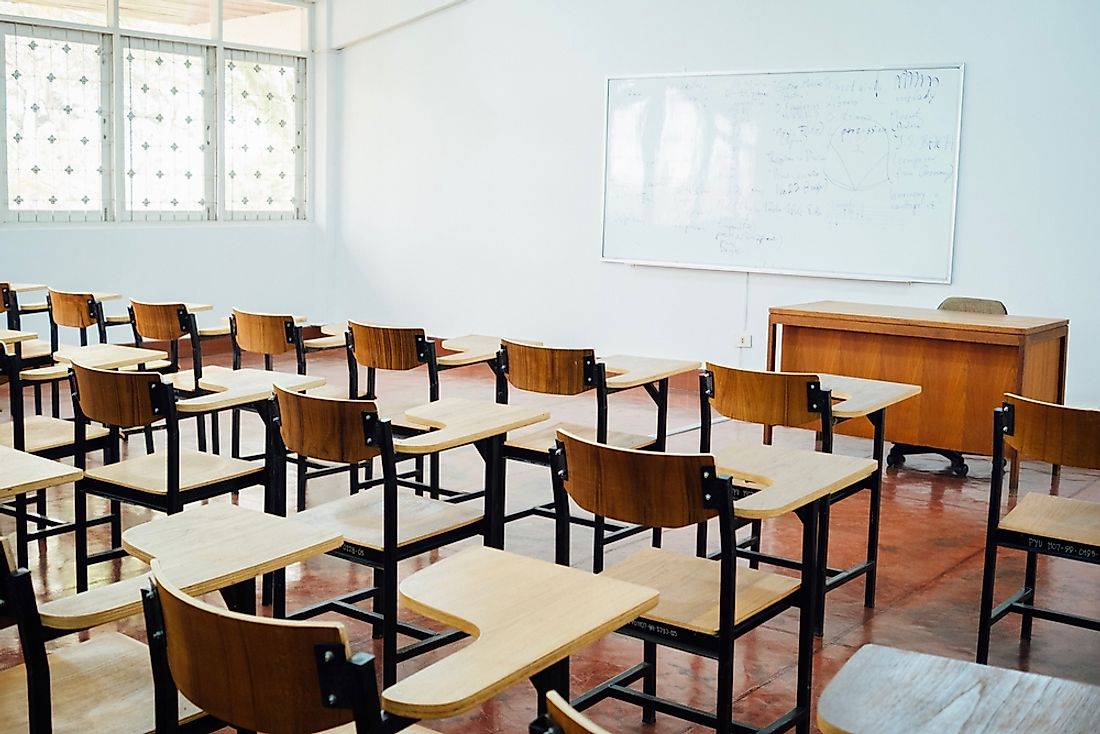Countries Where Girls Are Least Likely to Finish Primary School

Developing countries across the world have achieved significant progress in education attainment over the last decade. Despite this, girls continue to suffer exclusion in school systems everywhere. When girls do not receive adequate education, countries do not reach development goals and remain in poverty. Educated girls help to break the vicious cycle of poverty by increasing their involvement in the workforce and by increasing the age at which they marry and have children. Many factors contribute to girls’ exclusion and these range from inadequate infrastructure to cultural norms. This article takes a look at the countries where girls are least likely to graduate from primary school. These numbers only consider girls who have been enrolled in school, many girls are not even given the chance to go.
Mozambique
In Mozambique, an African country, only 30% of girls finish primary school. Although recent efforts have increased girls’ school enrollment numbers to 94%, the majority of them drop out. Girls are less likely to graduate because from a young age they have domestic responsibilities (such as collecting water) that boys do not have. The United Nations Girls Education Initiative (UNGEI) is working to keep girls in school by creating gender-sensitive teaching curricula.
Madagascar
In Madagascar, the inequality in education begins at school enrollment. At least 78% of all the school districts have a lower enrollment rate for girls. Of the girls who do enroll in school, only 41% finish primary level. One of the biggest problems facing this country (in terms of basic education) is the general perception that education holds no value for the household. Sending a child to school actually decreases supplementary household income (in the short term) as the kids no longer contribute.
Togo
This is the first country on the list where more than half of girls graduate primary school, but the number is still low. Only 51% of girls will go on to finish primary school. Of the many factors contributing to this, one is childhood marriage. Girls are married at very young ages by their families and once married, they stay home to tend to domestic responsibilities.
Benin
In Benin, as with all the countries on this list, poverty is a key factor that keeps little girls out of school. Families must spend money on fabric for uniforms and on school supplies. The common belief here is that parents should only invest in boys’ education. This contributes to the fact that of the girls who are able to enroll in primary school, only 52% graduate.
Cambodia
Cambodia presents many obstacles to girls’ education which is why only 55% of them finish primary school. After years of political instability, this country was left with almost no surviving teachers, writers, or scientists by 1978. This has left a drastic gap in the educational quality here. In addition, children are often more useful to families as laborers and work on farms, in clothing factories, in construction, or in the fishing industry. Many families also sell their children to the sex trafficking industry. Girls with higher levels of education are seen as “unmarriable”, which deters many parents from encouraging their schooling.
Burundi
In Burundi, only 59% of girls enrolled in school actually graduate. In this country, primary school was not even mandatory for children until recently. War divided Burundi for many years and left the educational infrastructure lacking. Despite this, overall school enrollment has increased from 59% in 2005 to 96% in 2011. However, girls drop out at faster rates than boys due to shared bathroom facilities, early marriage, and teenage pregnancy.
Guinea
The reason girls do not graduate from primary school here are similar to the other countries listed. With only 65% of enrolled girls finishing school, Guinea has recognized the urgency of the problem and taken actions toward improvement. The government is working with the United Nations Children’s Fund (UNICEF) to improve the school infrastructure, reinforce teacher training, and motivate parents to keep their girls in school.
Niger
In Niger, only 50% of girls go to primary school. Of that small amount, only 66% go on to graduate. Girls here are kept from going to school so that they can take care of household chores which includes collecting water and caring for smaller siblings. Girls are also more likely to be put to work selling things in the street.
Solomon Islands
On the Solomon Islands, 69% of girls who actually enroll in primary school go on the graduate. History and culture come together in this nation to prohibit girls from attaining education. The population here is largely rural and survives by subsistence farming. Historically, families educated their children via oral traditions. Girls learned typical household chores this way. This culture persists today, preventing girls from participating in the formal educational system.
Ivory Coast
The Ivory Coast shares the same primary school graduation rate as the Solomon Islands, 69%. Here, the quality and availability of teachers is prohibitive to girls’ education. The country recently received a $41.4 million grant, however, in order to address these issues by training teachers and building more schools.
Countries Where Girls Starting School Are Least Likely To Complete Their Primary Education
| Rank | Country | Female Primary School Survival Rate |
|---|---|---|
| 1 | Mozambique | 30% |
| 2 | Madagascar | 41% |
| 3 | Togo | 51% |
| 4 | Benin | 52% |
| 5 | Cambodia | 55% |
| 6 | Burundi | 59% |
| 7 | Guinea | 65% |
| 8 | Niger | 66% |
| 9 | Solomon Islands | 69% |
| 10 | Ivory Coast | 69% |







